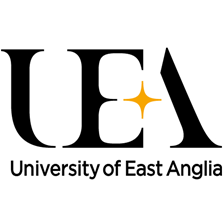
How can universities get more school pupils enthusiastic about science?
All UK universities are, in principle, committed to ensuring people from under-represented groups in higher education can access the same opportunities as others. But how institutions create and share these opportunities is much more complex and varied.
One approach at the University of East Anglia (UEA) involves targeted proactive outreach working with more than 60 schools and colleges across Norfolk and North Suffolk, from primary to sixth forms. Here we share lessons from a well-established project called Bringing Scientists To You, which aims to generate an interest in science among school pupils, ahead of their GCSE studies.
What is ‘Bringing Scientists To You’?
Devised in 2009 by Susan Matthews of the UEA School of Pharmacy and myself, Bringing Scientists To You (BS2U) is an event for up to 480 pupils from years 8 and 9, located in three areas of Norfolk with low participation in higher education. Pupils from up to six local schools attend each day, with a maximum of 24 schools participating each year. Across a single day, six 45-minute interactive workshops run concurrently, each represented by a different school in the Faculty of Science. Pupils rotate around each workshop during the day, exposing them to the diversity of science and maximising university staff time. Each day is concluded with a round-up session about potential next educational and career steps.
But how did we get here?
Develop close working relationships with schools
Getting initial buy-in from local secondary schools proved difficult as the project was new, untested and there was no existing relationship with the target schools and their teachers. We overcame this challenge by visiting the schools and talking to staff, particularly science teachers, about the event and its aims. We needed to invest time in developing relationships and trust.
- Resource collection: How to achieve equity in higher education
- How block teaching supports students from under-represented groups
- Raising aspirations: lessons in running a young scholars programme
In the 14 years since, an increasing number of schools have participated, through word-of-mouth recommendations and more teachers becoming engaged. School staff who attend are asked to make suggestions for event improvements which are incorporated where possible, making BS2U a partnership between schools and the university. Some teachers tell us that teaching approaches or techniques used in the workshops have later been applied in classes back at school.
Make it interactive
Pupils gain most when they are actively learning and participating, so interactive elements are key to the workshops. Workshops typically focus on subjects taught in school and begin at a level appropriate to the age range then progress to explore areas that the pupils won’t have encountered before.
Examples of interactive activities include DNA extractions in biology workshops, programming using Lego robots in computer sciences, making hand cream and calamine solutions in pharmacy, and performing experiments where written messages disappear and need to be rediscovered using chemistry.
Show pupils their potential pathways to college and university
An aim of these events is to increase science enthusiasm among young people as well as introducing transition routes post-secondary school. Many schools we work with do not have a sixth form or college. Where possible, the events are hosted at sixth-form colleges where many of the pupils could go on to study. The events give many pupils their first experience of a sixth form, while also offering insight into university. They show potential next educational steps and break down barriers about going to college and university.
Present relatable role models
We introduce role models to pupils by employing people who were recently in their shoes. Where possible, PhD students or staff members who went to one of the local schools attend and talk about their academic journey, allowing pupils to see that people like themselves attend college, university and pursue science careers. Feedback received from teachers and pupils suggests it is incredibly powerful for the pupils to hear from people like them and to learn about their achievements.
Continue engagement beyond the event
A challenge of outreach events is how to maintain engagement and extend the impact beyond the event itself. We know that pupils’ parents or guardians have a significant influence on the decisions pupils make and so we try to reach parents and guardians through the take-home resources pupils create in the workshops – for example, the hand cream they have made or the DNA they have extracted from a strawberry.
By helping them to create something novel that they can show off, we hope to stimulate conversations at home about the event, the pupil’s interests and next educational steps. We know from verbal and written feedback provided by teachers and pupils that parental conversations are being stimulated through items that are produced. Pupils can also use participation in BS2U toward their Youth STEMM Award, a national science scheme similar in style to the Duke of Edinburgh Award.
This event is part of a series of UEA science events run during the pupils’ time at school. Many pupils participating in this workshop will also take part in other UEA activities during their educational journey, all aimed at building science capital, supporting attainment, raising aspirations and, ultimately, allowing them to make informed choices about higher education.
Support career development for staff and PhD students
Where wanted, staff and PhD students are supported to design and plan engaging outreach learning activities appropriate to the pupil level and discipline. They can also be helped to reflect on such activities and demonstrate how they have promoted engagement in learning and equity of opportunity for all, to meet the Professional Standards Framework for HEA applications and PhD programme training goals.
BS2U is an opportunity for staff and students to communicate their research and interests to a wider audience and to help inspire the next generation of scientists.
Carl Harrington is a lecturer in the School of Biological Sciences and a widening participation academic at the University of East Anglia (UEA).
If you found this interesting and want advice and insight from academics and university staff delivered direct to your inbox each week, sign up for the Campus newsletter.




